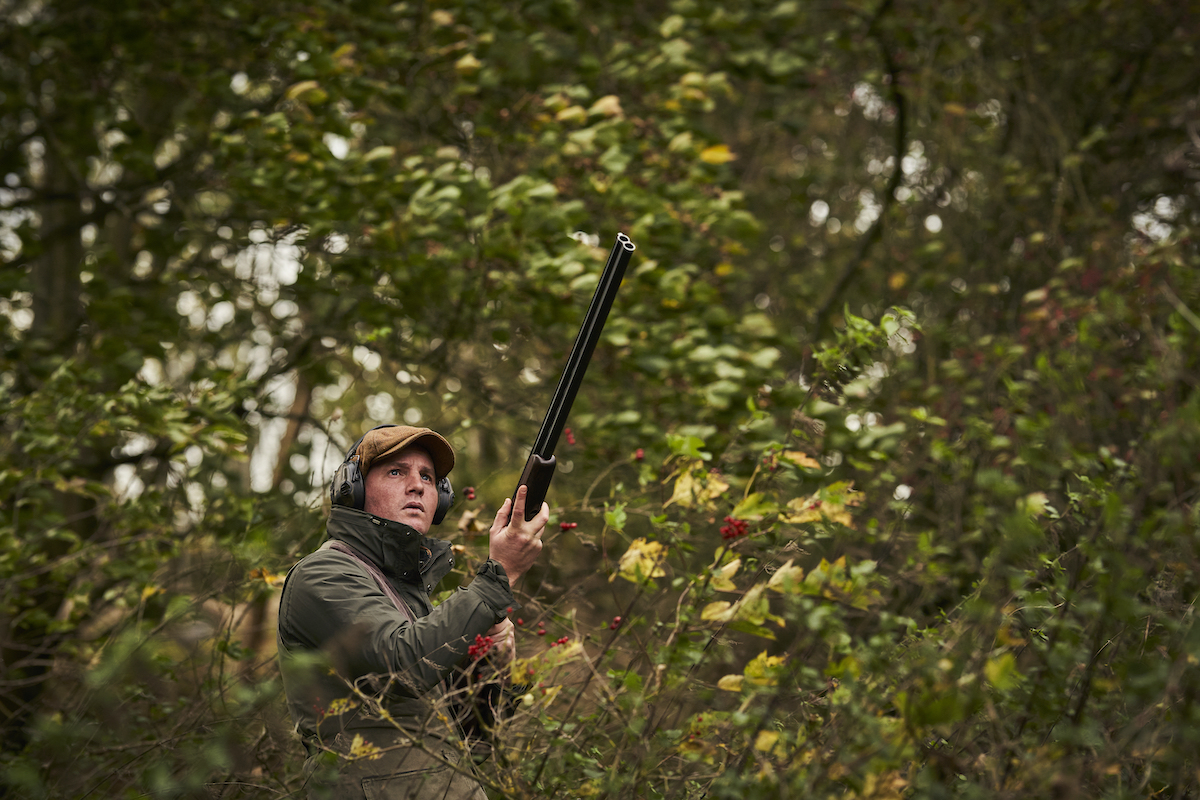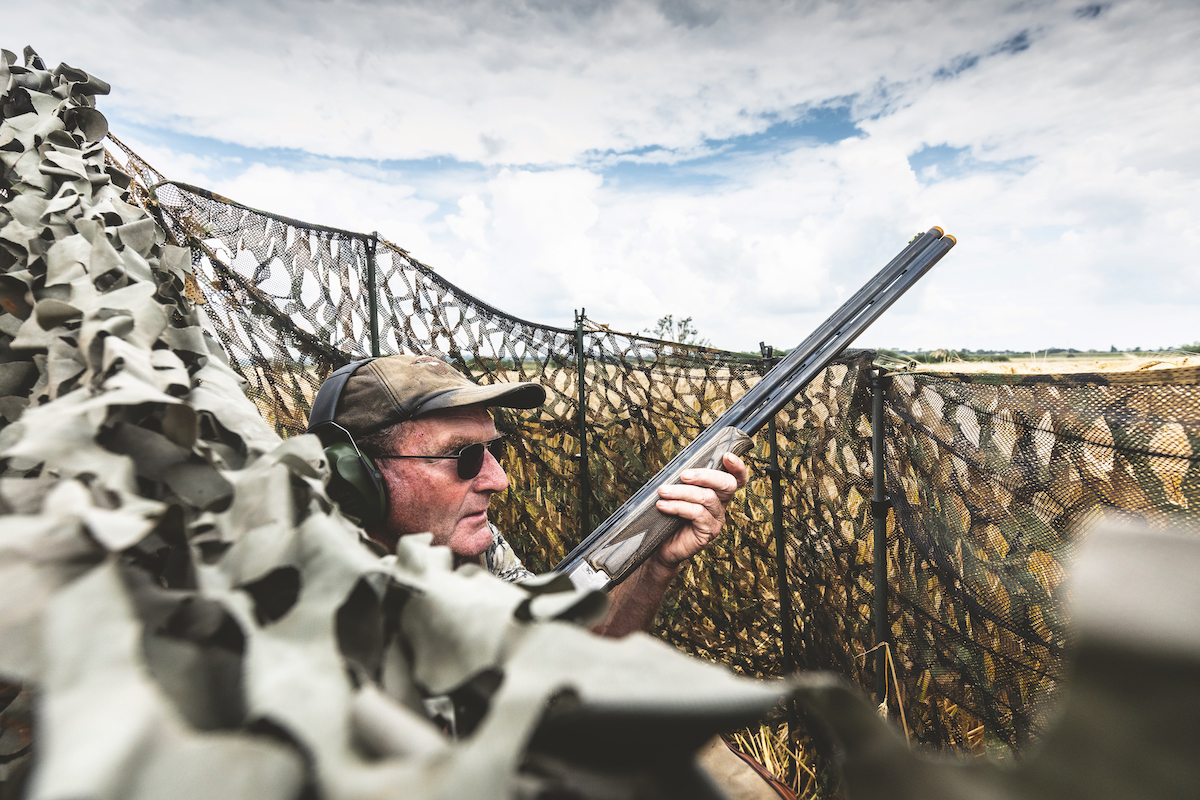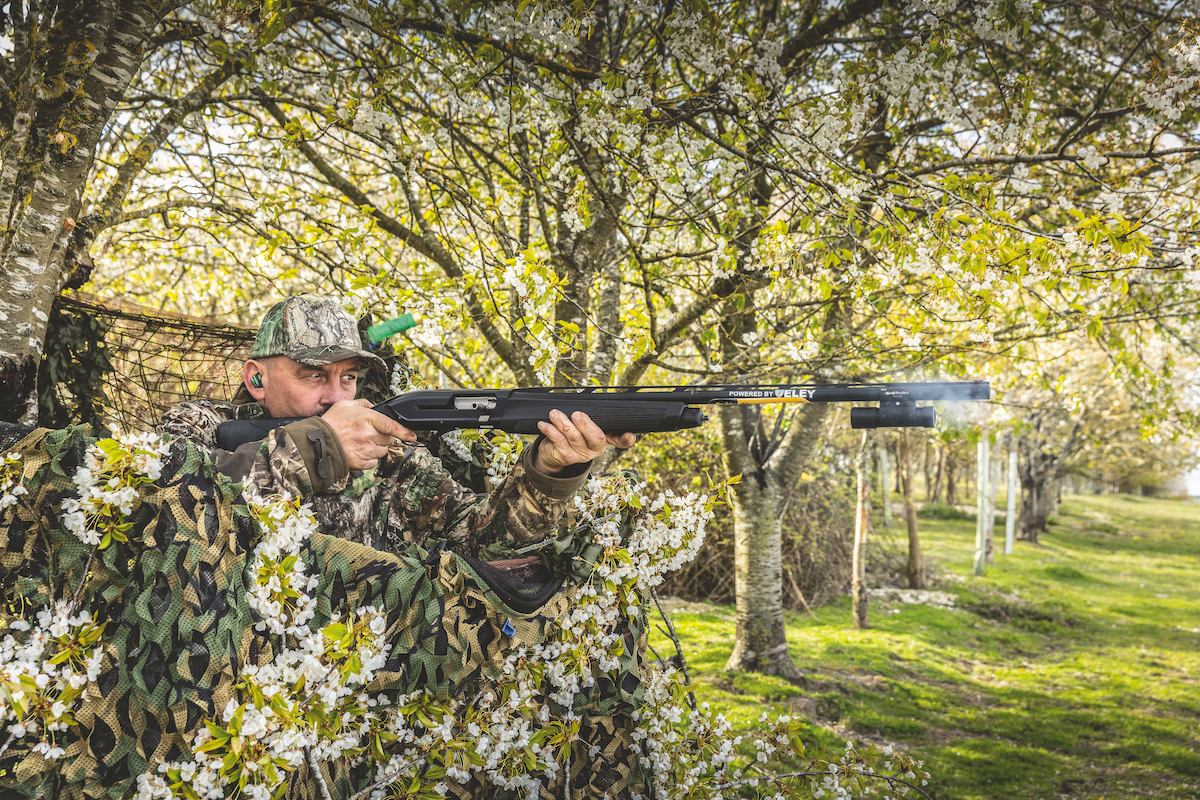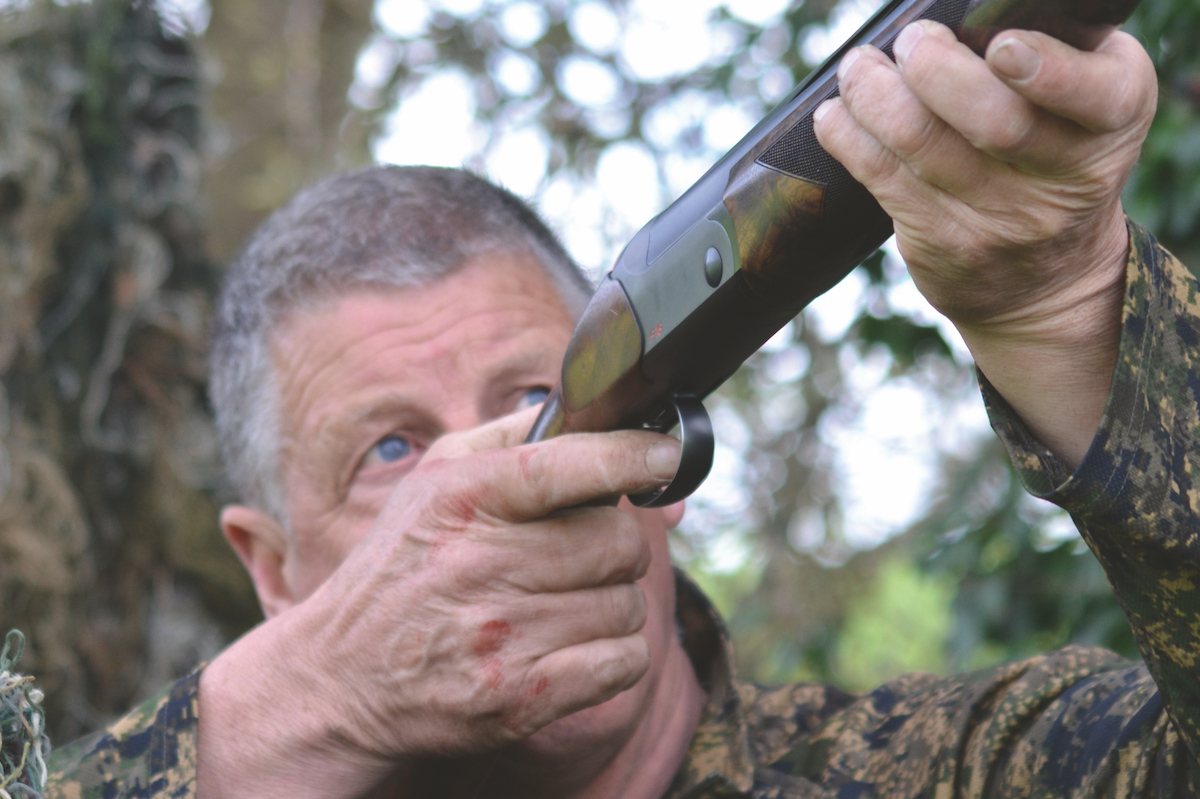The Pigeon Shooter’s Code
Tom Payne underlines the importance of the Pigeon Shooter’s Code, even if he doesn’t always practise what he preaches

Tom preparing to take a shot at passing pigeon.
The conditions were great for an afternoon’s pigeon flighting. We decided to hop into photographer Oli Lees’s pickup as I had chosen to flight the birds, which meant, with the location, I only needed a gun and some cartridges. Flighting is the purest form of pigeon shooting: there’s no fancy equipment. All you need is fieldcraft and good reconnaissance. (Read what’s the law on pigeon shooting?)
We turned into the field off a country lane and followed a dog-leg round to the margins, where there was space for us to drive without disturbing anything. There appeared to be a few tractor ruts but, with my classic optimism, I told Oli his truck would be fine. In a matter of seconds we slid off the track and straight into a deep trench. I knew straight away that we were stuck. Oli’s ‘shoes’ were not good enough to get us out of this one.
The Pigeon Shooter’s Code
That didn’t stop us trying, and we spent the next hour making sure that we were really stuck. In the end we had to concede defeat. Time to make the phone call no pigeon shooter ever wants to make — to the farmer or gamekeeper during work hours to say we were stuck and please would they come and tow us out. It wasn’t only the inconvenience and disruption to the day, but also the farmer was not going to be happy when they saw the mess we’d made, accident or not. I certainly wouldn’t be.
For the pigeon shooter there are certain things that exist as unwritten rules. The Pigeon Shooter’s Code, if you like. A lot of it is common sense but there’s always someone who doesn’t get it. Gaining permission should be respected and, the pigeon shooter’s priority is respecting the land on which they have permission. You have to remember it’s also someone’s home and workplace. (Read how to choose the right shotgun and cartridge for pigeon shooting.)

To Payne picks his spot in the woods to await the flight, hoping the trees will provide enough cover
Straightforward courtesies such as not leaving any litter and making sure you pick up your cartridges should be obvious even to a trespasser, but I am genuinely amazed at how many times I see cartridges left in a hedgerow.
You must always ask if it’s OK to cut vegetation. And even if the landowner says yes, you don’t go hedge-laying or clear-felling: the permission purely means you can cut and clear any minor foliage that may affect the position of your hide or shooting angles, or cutting and taking foliage to brash up your hide. Any removal of branches, shrubs, thick foliage and so on should be done with consideration. Think about what you are cutting before doing so.
Driving on the ground is another factor for which permission must be asked. Oli and I were stuck — I will get back to that — but we still had permission to be driving where we were. Lots of fields are relatively dry, and for most stubbles and dry cultivated ground, permission will be granted to drive on them. A lot of farms have drivable tracks now but you must be fully aware of which margins you can drive on and which you can’t.
For instance, the payment for certain agricultural schemes can be seriously affected if the ground is driven on. Some farmers, at certain times of the year and depending on the weather, let you drive the tramlines. And again, even if you have been granted permission, they should be assessed by you before you do so. If at any point the driving looks a bit iffy, don’t be like us — don’t risk it.

Tom shooting at long crossing pigeon – after a bad start, the shooting turns out to be excellent
Inconvenience
Always make a phone call to the farmer to say you are coming and always tell him when you’ve gone. Don’t go shooting near villages or people’s houses; if you are quite near someone’s house, let them know what you are doing and apologise for any noise and inconvenience. Do explain why it is necessary and that it will only be for that day, with possibly some more outings in the future. (Read how close to a footpath can you shoot a shotgun?)
The shooting season brings with it other considerations. Lots of keepers will prefer it if you don’t shoot near drives or pens. This should be common sense. In most cases pigeon shooting will be stopped by keepers and this should be respected, even if you have a farmer who wants you to shoot. If pigeons are causing an issue, use your knowledge to try to deter them. Non-lethal methods are not as effective but will at least give the farmer a hand. Those methods will push the birds on to other crops. This could be away from pens and drives and may offer you a chance to control the numbers and damage caused by shooting them there.
Ridicule
So, back to our predicament. As I said, I would be having to make that dreaded phone call. I phoned Nick — no answer. This meant he was busy. It also meant I had to phone back, which could have interfered with what he was doing. Luckily, I’m very good friends with most farmers and Nick is a great mate, so I wasn’t too bothered about pestering him. It was more the ridicule I was going to have to suffer from him. There was still no answer.

This pigeon was shot with an acorn still in its beak
Next plan
While Oli was apparently attempting to bury the pickup with enthusiastic digging, I chose to have a cup of tea and reassess my options. I decided to call the neighbouring farmer, James White, who is also a good friend. He kindly came to the rescue, albeit not quite in the vehicle I was expecting. He brought his Freelander with some kind of all-terrain tyres on.
We hooked Oli up, did a bit of digging and, much to Oli’s embarrassment, the Land Rover Freelander — in ‘mud mode’, I might add — pulled him out. This was all witnessed and supervised by me as I helpfully drank some tea.
Finally out, Oli and I made new plans. We drove to the other side of the farm and entered a field we knew to have good flights. We both felt it best to leave the pickup somewhere sensible and walked a bit of an extra distance to the wood. It was incredibly windy, 40mph-plus. Birds were battling to get over the wooded strip, so it was going to be an interesting shoot.
I placed myself in a small gap between the trees, hoping the fir to my left would act as good cover and give me plenty of time to pick my birds. The first one took me by surprise, heading into the wind. It needed a slow, controlled shot, almost too slow — a very easy shot to check yourself on. If it had decided to change direction, the sudden movement and acceleration would have made it a very hard shot because you’re not set for it. I’m not trying to make excuses, but it wasn’t easy.
Nailed it
So far I was three shots for no birds. Another bird came high and long to my left. I decided to kill it with gun speed. As it folded, the wind carried it back another 20 yards. Suddenly there was a crow hanging in the strong wind. I missed it with the first but, as it turned with the wind, I had a good shot over the trees and nailed it.
There was a slight lull, then birds began to move again. It was like being involved in two different shoots. To my left, long birds, slow and battling with the wind. To my right, ones that would battle with the wind but then turn with it and accelerate. To my left it was about controlled gun speed, to my right my line was the key as the pigeons turned with the wind.
It was good, technical and very challenging shooting. I picked nine in the end for a little less than a box of cartridges which, given the conditions and the technicality of the shooting, I was very happy with.
So what started as a nightmare of an afternoon actually turned out to be quite fun.
What did we learn from the experience? A couple of things. Don’t listen to me when it comes to off-road driving and a Land Rover will always come to the rescue. On a more serious note, permission is hard to get and easy to lose. Respect the ground you are on and the people who own it, as well as the people who work it and those who live on it.








